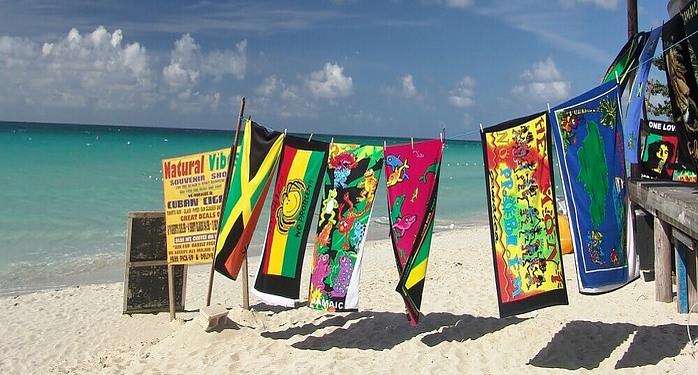There are many musical genres. From classical to R&B through heavy metal to jazz, rock and pop, via ska and reggae. Here I am going to be exploring the roots of reggae music from its early days in Jamaica in the 1960s through its explosion onto the world stage and subsequent evolution.

Just What is Reggae?
Of course, reggae isn’t just a music genre; it’s a powerful cultural expression that embodies the struggles and triumphs of a people. Originating in Jamaica in the 1960s, reggae music quickly transcended its geographic boundaries to become a global phenomenon. At its core, reggae is marked by its distinctive rhythm section, often characterized by a heavy bassline and a backbeat that is replete with the sounds of the snare drum and cymbals.
The birth of reggae music was no accident. The roots of reggae are founded in and nurtured by the ashes of political upheaval, economic struggles, and a fervent desire for social change. Jamaica’s complex history, marred by colonialism and the fight for independence (achieved on 6 August 1962), provided fertile ground for this artistic uprising. Reggae became the battle cry for those who often went unheard, giving a voice to the marginalized and channelling collective aspirations for freedom and equality.
But reggae wasn’t only a mirror reflecting social issues. It also served as a spearhead, pushing forward movements advocating for human rights and justice. The genre embraced themes of love, unity, and resistance against oppression, which eventually resonated with audiences worldwide. It offered solace and strength to communities grappling with similar socio-economic challenges.
Influential Reggae Figures and Their Lasting Legacy
Stop for a minute. Can you think of any influential reggae figures? It’s likely that anyone you think of will likely be someone who didn’t just contribute tunes; they were catalysts of cultural change, and their impact is still felt today. When you consider icons like Bob Marley, you’re not just thinking of his laid-back rhythms. He and others like him carried the message of reggae far beyond Jamaica’s shores, bridging gaps between nations and people through heartfelt lyrics and soul-stirring beats.
So, let’s not waste any more time. I suspect it may already have occurred to you, but when you think about reggae, there’s no escaping the towering influence of Bob Marley. This man wasn’t just a musician; he was a revolutionary spirit cloaked in the peace and love of his tunes. Marley’s messages of unity, anti-oppression, and love resonate to this day, ensuring his place as the face of reggae for many around the globe.
Now, while Bob Marley is a household name, let’s also shine a light on other luminaries like Peter Tosh (MacIntosh) and Bunny Wailer. They were Bob’s bandmates and co-founders of The Wailers and pivotal in cultivating the reggae sound. Tosh, with his militant stance and sharp critiques of the establishment, and Wailer’s rich, spiritual tones, contributed distinctive flavours to the music that birthed a movement.
Other influential reggae artists include Jimmy Cliff. He is perhaps best known for classic tracks such as The Harder They Come. Then there were Toots and the Maytals, led by Frederick ‘Toots’ Hibbert. Some consider Hibbert as influential as Marley. As it was, they were instrumental in shaping the genre with their energetic performances and hits like Pressure Drop. Desmond Dekker, although perhaps more associated with ska, had what was possibly the first reggae hit in 1968 with Israelites.
Influence of Rastafarianism on Reggae
If we’re looking into reggae’s soul, the influence of Rastafarian culture can’t be overstated. Reggae is closely associated with the Rastafari movement, a religious and social movement that emerged in Jamaica in the 1930s. Many reggae artists, including Marley, were followers of Rastafari, and reggae lyrics often reflect Rastafarian beliefs. They echo Rasta’s teachings about African unity, righteousness, and resistance to oppression. These spiritual overtones gave reggae a depth that went beyond mere entertainment.
Driven by these influences, the music of these icons rippled across the world’s oceans, affecting change and inspiring a plethora of movements. Regions as diverse as Africa, Europe, and the Americas caught onto reggae’s beat. This illustrates the profound legacy of these trailblazers, whose work was a catalyst for reggae’s journey from the streets of Kingston to the global stage.
Musical Roots
If you’ve ever tapped your foot to a reggae beat, you might wonder where that compelling rhythm originated. Reggae didn’t just appear out of nowhere. It’s the result of a fascinating evolution from its predecessors: ska and rocksteady.

Ska emerged in the late 1950s with a distinctive offbeat rhythm, and it was the island’s response to American jazz and R&B. It’s characterized by a walking bass line accented with rhythms on the offbeat. As we moved into the 1960s, rocksteady took the stage, slowing the tempo of ska and introducing more pronounced basslines and smoother vocals.
The transformation into reggae is credited to a few innovative individuals. Producers like Leslie Kong (who founded Island Records with Chris Blackwell and Graeme Goodall), Duke Reid, and Clement Seymour ‘Sir Coxsone’ Dodd, along with their studios, experimented with the tempo and introduced various sound effects that became staples in reggae music.
This experimentation led to what we now recognize as the reggae rhythm, or ‘riddim’ in Jamaican Patois, a Creole language with West African, Arawakan, and English influences. This imbues reggae with its steady pulse and chopped guitar strokes – bringing a greater emphasis on the bass guitar as a rhythmic tool. Part of this is given by the rhythmic patterns and spiritual energy of Nyabinghi drumming including the one-drop drumbeat — characterized by the emphasis on the third beat of each measure.
These are augmented by the incorporation of elements of Jamaican folk music, including mento and traditional work songs. These influences contribute additional layers to the distinctive melodic and rhythmic patterns found in reggae music.
Reggae lyrics frequently use Jamaican Patois. The use of Patois not only adds authenticity to the music but also serves as a cultural identifier, preserving and celebrating the linguistic diversity of Jamaica.
Evolution and Travel Around the World
The beauty of reggae is in its ability to grow and adapt. From roots reggae that harkens back to the Rastafarian spiritual messages, to lovers’ rock that carries a softer, more romantic feel, each sub-genre maintains the essence of reggae while adding a new dimension to the sound.
For example, in the UK, in the late 1970s, there emerged a new music sensation called Two-tone. Heavily influenced by the ska and reggae sounds imported from Jamaica, Two-tone blended elements of both, along with British punk and new wave. The term referred to the monochrome nature of the movement’s fashion, but also its adoption by both black and white – perhaps a rare example of racial unity and social inclusion at the time. Bands like The Specials, Madness, and The Selecter played a key role in popularizing the two-tone sound.
As we lead into the present day, I’m going to investigate how reggae has been both preserved in its traditional form and transformed by modern influences. The latter part of the 20th century saw the rise of dancehall, another genre that took the foundational elements of reggae and ramped them up with electronic instruments and faster rhythms.
Reggae Today: Preservation and Transformation
Reggae’s roots are undeniably deep, with a rich history interwoven with messages of love, resistance, and social commentary. It came from humble beginnings but now spans the globe, both preserving its original spirit and continually transforming with the times.
In my opinion, respecting the roots means recognizing the foundational artists and tracks that shaped reggae into what it is today. These classics still resonate, influencing not only music fans but also modern reggae artists who carry the torch forward. Icons like Bob Marley are immortalized both in their music and in how they inspire new generations.
But reggae isn’t just a museum piece; it’s a living, evolving genre. For example, modern artists blend traditional reggae rhythms with genres like hip-hop, jazz, and EDM, reflecting the ongoing dialogue between the past and present.
What’s remarkable about reggae today is not just its adaptability but also its ability to retain its identity no matter how far it travels from its Jamaican roots. Reggae festivals, international collaborations, and its 2018 UNESCO recognition as ‘Intangible Cultural Heritage’, highlight this enduring appeal.
The Future of Reggae
The future of reggae seems promising. As it continues to evolve, the genre offers a fusion of sounds which resonates with a wide audience while still conveying powerful messages of hope and unity. Its enduring legacy is a testament to its ability to adapt without losing its heart.

If you are new to reggae, why not choose something that resonates with you within the genre? Whether it be old-school roots reggae or a modern blend. There are a lot of opportunities to explore and appreciate within this unique form of expression. Your first attempt doesn’t need to be your last; this is a timeless journey where the rhythm never truly stops.

